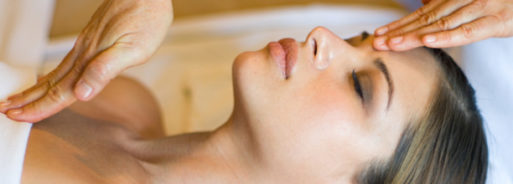Today, SevenPonds speaks with Jennifer Brinn, who has been a Reiki practitioner since 2003. She achieved a Master level in 2006 and now teaches new practitioners as well.
Debra: Jennifer, thank you so much for taking the time to speak to me about Reiki. Could you tell me about your practice?

Credit: Jenniferbrinn.com
Jennifer: You’re welcome, Debra. Basically, Reiki is a Japanese energy healing modality. It works on several levels, including emotional, spiritual, and physical. The practitioner draws energy from the atmosphere and passes it through the client. Because you are channeling energy from other sources, you don’t exhaust yourself. This allows you to remain fully alert to help your client. The goal of treatment is “waking up” the body’s cells, which reduces negativity and creates a sense of peace and well-being.
Debra: What are the goals of Reiki?
Jennifer: Reiki practitioners believe that problems with physical and psychological health occur when negative thoughts and feelings attach themselves to an energy field. Reiki flows to the affected energy field and breaks up the negativity, which falls away. The main goals are speeding up healing, cleansing toxins that poison the body and maintaining energy balance. Reiki also aims to prevent negativity from blocking energy flow. Perhaps more important of all, it helps the client discover his or her inner healer.
People who practice Reiki use five tools. The first is gratitude. If you think of all the things that you are grateful for, you’re much less likely to find time to think about all the problems in your life. The second is the rule that energy follows focus. If you focus on all the bad things, the energy follows the same path in your brain. If you can think of something funny or joyful, your thoughts become more positive.
The third is journaling. Putting thoughts on paper allows you to dispel negative energy and make your aura lighter. The fourth tool involves sitting or lying down in nature and absorbing the energy of the earth. This is an enormous source of positivity. The fifth and final tool is meditation. When you meditate, you try to clear your mind of all the negative thoughts. If a negative thought finds it’s way in, you notice it, acknowledge it, and gently let it go.
Debra: How do you train to be a Reiki practitioner?
Jennifer: There are three levels of training. Level one provides the basics. Level two teaches sacred symbols, which can be used on clients. The Master level class teaches you how to become a Reiki instructor. The classes usually take place during a weekend or in the evenings.
Debra: How did you get interested in Reiki?
Jennifer: I had a bad back injury in 1999. My treatment included Western medicine such as painful injections to the spine. Worse, these treatments did not seem to be healing the injury. Eventually, I turned to alternative medicine, including yoga and Reiki. I haven’t required another shot since. Some people use both Reiki and other types of medicine. A cancer patient, for instance, might have chemotherapy to shrink the tumor and Reiki to ease the side effects of the chemotherapy.
Debra: As I’m sure you know, SevenPonds works with people who are close to death or with those who are bereaved. What are your goals from Reiki when healing is no longer an option?
Jennifer: When people are anxious, Reiki can help calm them. It may also help ease pain, and increase positive energy while decreasing negative energy. Meditation also helps with anxiety, and lying in the great outdoors can increase positivity.
To reduce pain, the practitioner may hold her hands an inch or two away from where the pain is worst. This helps “break up” the pain. You do not have to touch the person, but it will not hurt to do so.
Debra: Thank you, Jennifer!
Please join us next week for the second part of my interview with Jennifer, where we’ll talk some more about how Reiki helps people who are close to death and those who are grieving.

 How Is Reiki Used for Emotional and Physical Healing? An Interview with Jennifer Brinn, Part One
How Is Reiki Used for Emotional and Physical Healing? An Interview with Jennifer Brinn, Part One




 How Dare You Die Now!
How Dare You Die Now!
 Debating Medical Aid in Dying
Debating Medical Aid in Dying
 “Help Me, Helen”
“Help Me, Helen”














